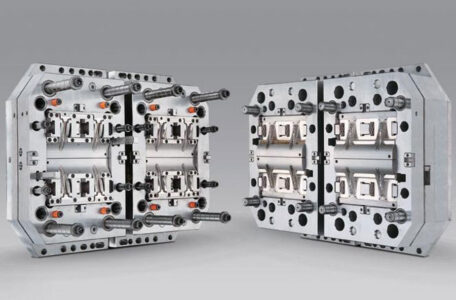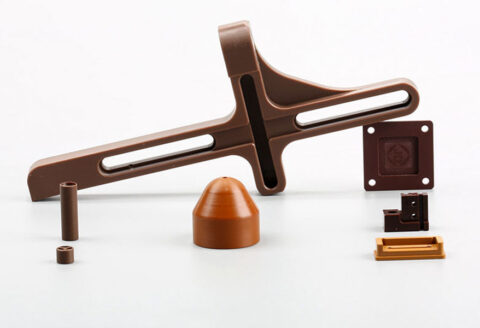As we all know, with the accumulation of the number of on-site production molds, the mold life is a gradual decline process, from the running-in of the new mold to the normal production to the end of life.
How can plastic machining service factories increase brightness when producing abs injection molded parts?
The main reason for the defects in plastic service machining in the production of plastic parts is the injection of molds, industrial raw materials, etc. If the mold machining is poor, such as scars, wear, roughness, etc., it will also be reflected on the plastic parts, and the plastic parts will be shiny. bad. In this regard, the plastic service machining plant must carefully process the mold to ensure that the surface of the mold cavity is not rough, and if necessary, the mold can be polished and chrome-plated.
CNC machining precautions pay attention to safety details
In the process of precision cnc machining, every job is a problem that needs attention, especially in the case of precision CNC machining, the details of the processing process are very important. Only in this way can we get good practical results under the working conditions. So what details should be paid attention to in precision CNC machining? 1. Before machining precision CNC parts, check whether a part of the machine is filled with lubricating oil before working, then start and check whether the clutch and braking system are all normal, and run the machine idling for 1-3 minutes. When the machine has common failures Prohibit actual operation.
Production management of plastic molds
First, the effective management of product data management, process data management, drawing document management: effective mold product data management, process data management, drawing document management, can ensure the comprehensiveness of the document, the consistency of the drawing version; Drawings can achieve effective sharing and effective query utilization. A complete file management computer database can be established, and the design drawings accumulated by the design department, scattered, previously scattered and isolated information can be organized and used to prevent 2d, 3d confusion due to design drawings, original, design changes, and maintenance versions Confusion, 3D model and 2D drawing data inconsistency, 2D drawing design is not standardized and chaotic, which causes problems that are not easy to be discovered and corrected in time, causing molds to be modified and reworked, or even obsolete, increasing mold manufacturing costs and lengthening mold manufacturing The production cycle affects the delivery period.
Introduction of three types of plastic molds
Plastic molds are tools used with plastic molding machines in the plastic processing industry, and can provide complete structural configurations and precise dimensions for plastic products. According to different molding methods, plastic molds can be divided into the following three types. 1.Injection mold Injection molds are often used to produce thermoplastic parts, and the corresponding processing equipment is injection molding machines.
Seven Components Of Injection Mold
The basic structure of the injection mold can be divided into seven parts according to its use function: molding parts, pouring system, guiding mechanism, ejection device, lateral parting and core pulling mechanism, cooling and heating system and exhaust system. Molded parts It refers to the parts that make up the mold cavity.Mainly include: punch, die, core, forming rod, forming ring and inserts and other parts. The pouring system refers to the plastic flow channel in the mold from the nozzle of the injection molding machine to the cavity.Ordinary pouring system is composed of main runner, branch runner, gate, cold slug hole and so on.
Design and precautions of injection mold gating system
The composition of the pouring system Ordinary runner system, also called runner system, or pouring system, is the necessary passage for molten plastic from the nozzle of the injection machine to the mold cavity. The runner system includes main runners, runners, gates, etc. Mainstream:Also called the main runner, sprue or down runner, it refers to the runner from the part where the nozzle of the injection machine is in contact with the main runner bushing of the mold to the runner. This part is the first part where the molten plastic flows through after entering the mold.
Three principles that need to be met for mold material selection
Mold material selection is a very important link in the entire mold making process. Mold material selection needs to meet three principles: The mold meets the work requirements of wear resistance, strength and toughness; The mold meets the process requirements; At the same time, the mold should meet the requirements of economic applicability. The mold meets the requirements of working conditions
Plastic Injection Mold Manufacturing And Production Process
The plastic injection mold production process is generally divided into: customer customization, mold design, mold manufacturing, mold inspection and testing, mold modification and repair, mold maintenance, and I will explain them one by one below. Customer Customization In the production of plastic molds, customer engineers first provide product drawings to the mold manufacturer. The manufacturer collects, analyzes, and digests product data through the task requirements of molded plastic production, which is customized for customers.
- ABS Machining
- Ceramic Machining
- PA6 Machining
- PAI Machining
- PC Machining
- PCTFE Machining
- PEEK Machining
- PEI Machining
- PET Machining
- PI Machining
- PMMA Machining
- PP Machining
- PPS Machining
- Teflon Machining
- PU Machining
- PVC Machining
- PVDF Machining
- UHMW Machining
- UNILATE Machining
- POM Machining
- PTFE Machining
- Intrinsic Viscosity Of Polyetheretherketone (PEEK)
- The Development Of 3D Printing In China
- Advantages Of 3D Printing Technology In China
- 3D Printing Service And Device In China
- Guidelines for Best Available Techniques for Electroplating Pollution Prevention and Control Released
- The new standard changes the ecology of the electroplating industry
- Electroplating wastewater treatment process and principle of heavy metal removal
- Research and Analysis of the Recent Development of the Electronic Accessories Market
- Trends that the hardware mold industry needs to understand to keep up with the international pace
- Inventory of new trends in auto parts technology
- Intrinsic Viscosity Of Polyetheretherketone (PEEK)
- The Development Of 3D Printing In China
- Advantages Of 3D Printing Technology In China
- 3D Printing Service And Device In China
- Guidelines for Best Available Techniques for Electroplating Pollution Prevention and Control Released
- The new standard changes the ecology of the electroplating industry
- Electroplating wastewater treatment process and principle of heavy metal removal











